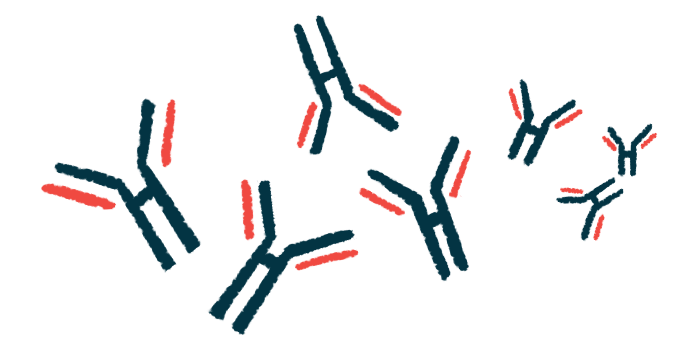Lack of protein that reins in B-cells may underlie cold agglutinin disease
CR1 protein controls this immune cell's activity and is at low levels in patients

Low levels of a protein that helps to regulate B-cell activity may explain why these immune cells turn highly active, overproducing so many of the self-reactive antibodies that cause cold agglutinin disease (CAD), a study suggests.
This protein, called complement receptor 1 (CR1), acts as a control on B-cells, preventing them from growing in an uncontrolled way. Its lack may cause the immune system to go awry, turning against healthy tissues.
The study, “Gene expression analysis revealed downregulation of complement receptor 1 in clonal B cells in cold agglutinin disease,” was published in Clinical & Experimental Immunology by researchers in Norway.
Study into gene activity in people with and without CAD
CAD occurs when self-reactive antibodies called cold agglutinins bind to red blood cells at low temperatures, making them a target for hemolysis (destruction) by the complement, a protein cascade that helps to defend against harmful invaders.
Like all other antibodies, cold agglutinins are produced by B-cells. It is thought that symptoms of CAD develop when B-cells grow out of control and produce too many cold agglutinins. Why exactly this happens, though, is unclear.
To understand what genes may be involved, researchers compared the genetic expression profile of B-cells from 12 people with CAD to that of four healthy individuals, serving as controls.
A gene expression profile contains information about all the genes in a cell that, at a specific point in time, are being copied into messenger RNA, the molecule that carries instructions to make proteins.
They found 93 differentially expressed genes; that is, genes that were either more active (upregulated) or less active (downregulated) in people with CAD than in controls.
Activity of 20 genes quite different, but only one less active in patients
Among the top 20 most differentially expressed of these genes, only one was less active in people with CAD than in controls. That gene codes for the protein CR1 (also known as CD35), and it was about 11 times less active, or downregulated, in patients relative to healthy controls.
The other 19 genes “were upregulated at least 8-fold compared to controls,” the researchers wrote.
Flow cytometry, a technique that allows researchers to separate B-cells from whole blood samples, confirmed that the CR1 protein was present at lower levels on the surface of patients’ B-cells than on those of controls.
B-cells in people with CAD may have uncontrolled growth or proliferation, producing high levels of cold agglutinins, a finding that could lead to a better understanding of the disease and, potentially, targeted CAD treatments.
“Downregulation of CR1 (CD35) in CAD might be responsible for increased proliferation and survival of autoreactive B cells,” the researchers wrote, adding that its diminished activity could lead to greater production of self-reactive antibodies.
“This finding is of interest because complement, in addition to its critical role for hemolysis in CAD, has been shown to control B- and T-cell responses, and thus is a regulator of adaptive immunity,” they concluded.
Of note, T-cells, like B-cells, are a specialized white blood cell of the immune system, and adaptive immunity refers to the ability of the immune system to remember previous encounters with threats — such as antigens like bacteria, viruses, or proteins — that appear in the body.







